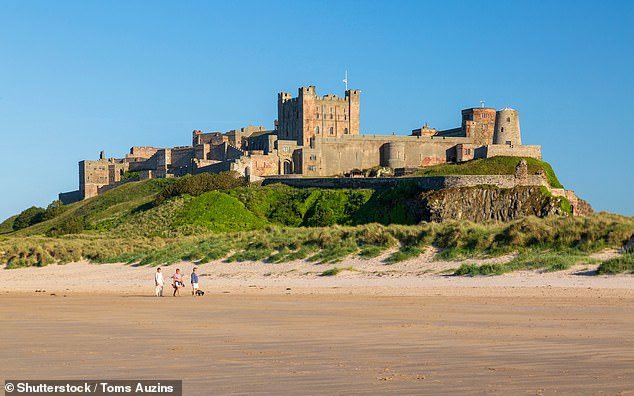
Over the past 20 years, experts from Durham University have been studying the remains of 110 Anglo-Saxons found buried near the Northumberland castle.
They were found between 1998 and 2007 under the dunes just south of the Bamburgh Castle but were likely buried 1,400 years earlier.
Researchers say the remains belonged to people from across the British Isles and particularly western Scotland but were all likely of a high status within the court during what historians call the 'Golden age of Northumbria'.
Comment: This seems to validate other finds: Fascinating discoveries suggest Isle of May was a healing centre for hundreds of years
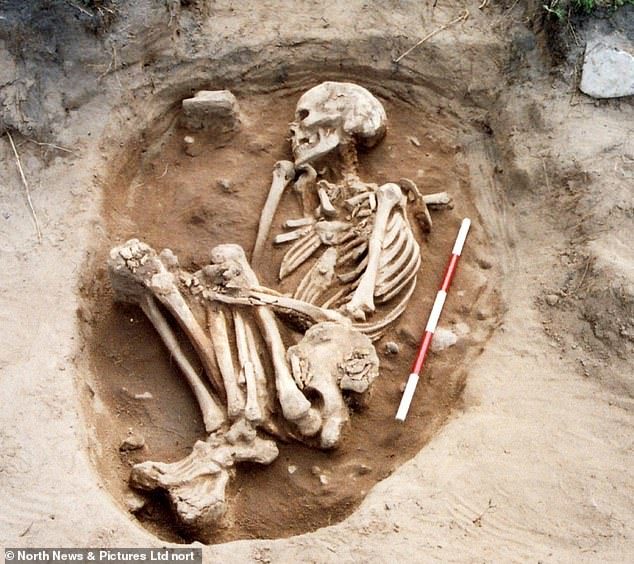
The crypt has now been opened to the public.
The vicar of St Aidan's, the Reverend Louise Taylor-Kenyon said: 'It is a reminder that this nation's history has continually been one of people visiting, settling, intermingling, and creating relationships and a more diverse society.'
Analysis by the Durham team found that only ten per cent of the skeletons came from the Bamburgh area, with most originating from the wider British Isles.
It also revealed that Bamburgh was a thriving and cosmopolitan hub, drawing people from across Europe to live and work.
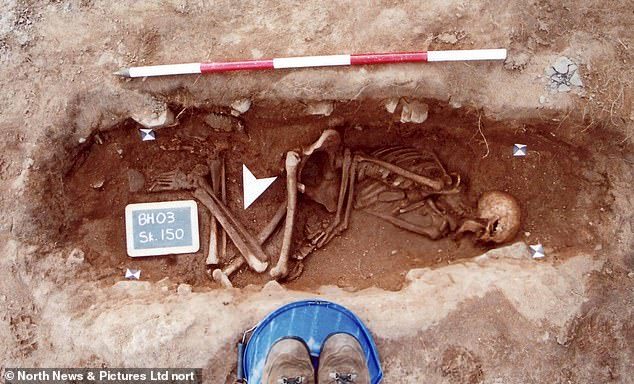
'So far, little has been made of this period in Bamburgh's history, when people travelled from far and wide', said Jessica Turner, from the Aiden bones exhibition.
She said they would come to enjoy the areas rich cultural and religious heritage, and marvel at its beauty and treasures.
'It really was a bright and shining age with the melting pot of cultures represented reflected in the likes of the Lindisfarne Gospels with its stunning mix of Celtic, Anglo Saxon, Mediterranean and Arabic imagery and calligraphy.'
Comment: The exquisite craftsmanship and inspiration of the era is evident in a number of finds: Staffordshire hoard revealed to be most important Anglo-Saxon find in history
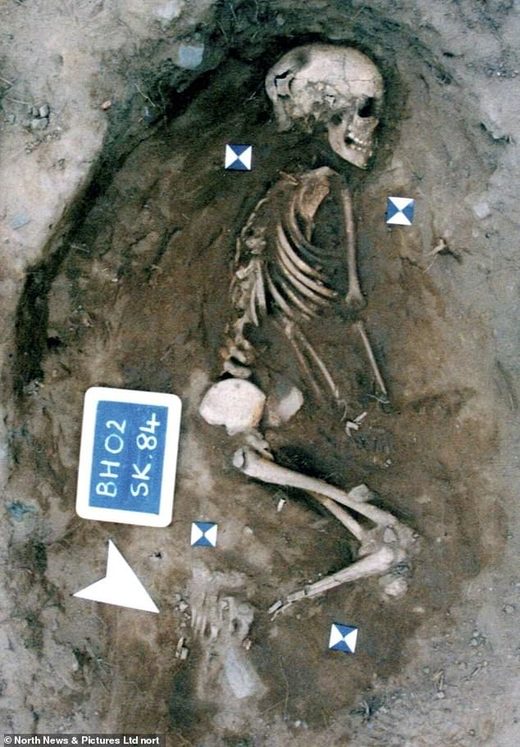
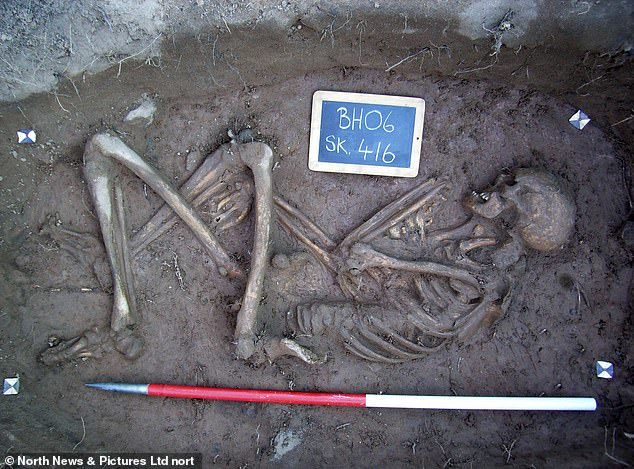
One of the skeletons is that of a nine-year-old child who was possibly born as far away as North Africa and spent their early childhood in France and a 25-year-old Irish woman who was almost certainly a weaver or needle worker.
The site of the excavations - the Bowl Hole Cemetery - is thought to be the burial ground for the royal court of the Northumbrian palace from the medieval period.
Ms Turner said the 7th and 8th centuries are often referred to as The Dark Ages but in Northumbria it was an 'age of enlightenment'.
Comment: Evidently the Dark Ages are a confusing period for historians and archeologists: Middle Ages weren't 'dark', it was an enlightened era - British Library expert
'If St Aidan hadn't come to Bamburgh then we wouldn't have had the Lindisfarne Gospels and many of the things we now take for granted like Durham Cathedral and the wider North East's Christian and cultural heritage.
'It's a story that is long overdue in being told, but the new Bamburgh Bones interpretation and online digital ossuary goes a long way to rectifying that.'
St Aidan of Lindisfarne was an Irish monk and missionary who is credited with restoring Christinary to Northumbria in the early middle ages.
HOW DID ENGLAND BECOME CHRISTIAN?
Britain was a fractious nation in the 7th Century AD, still looking for stability several centuries after the collapse of the Roman empire.
At this point, various kings ruled over different regions of land and many languages and religions dominated certain locales.
The exact date of the church is not known, but it is though to be around 633AD, or shortly after, when Ethelburga, a native of Kent, likely returned to her homeland following the death of her husband, Edwin.
Edwin was the son of Ethelfrith, a Northumbrian king who was known for his warring prowess and repeated skirmished with the Gododdin, a fierce celtic-speaking people from the north-east area of the then-called 'Britannia'.
King Redwalld of East Anglia dominated the centre of the country, and established the kingdom of Mercia while the Picts dominated modern-day Scotland.
Comment: For more insight into the Picts, see: Pictish stone with carved beasts, 'unlike anything found before'?Another king ruled the south-east, with Ethelbert of Kent and his French Christian wife Bertha in command of the region.Augustine (right, on bended knee), and a further 40 Benedictines, landed in Thanet and were met by Ethelbert and Bertha (left). The mission massed its litmus test in 602AD when the English king decided to join his wife's beliefs and opted to be baptised.He then also donated a certain site in Canterbury which would be home to the first, and most important, cathedral in the country. Augustine duly became Canterbury Cathedral's first archbishop
These royals had been visited by a bishop from Rome in 597AD called Augustine after Pope Gregory sent him on a mission to take Christianity to the British isles.
Comment: New evidence suggests Christianity had already made its way into the country, as noted in Prittlewell: Stunning artefacts discovered in Anglo-Saxon nobleman's burial chamber in Southend-on-Sea, England:Previously, the favourite suggestion was a king of the East Saxons, Saebert, son of Sledd. But he died about 616 and scientific dating now suggests the burial was in the late-6th century, about 580.
Gold foil crosses were found in the grave which indicate he was a Christian, a fact which has also surprised historians.
Sue Hirst, Mola's Anglo-Saxon burial expert, said that date was remarkably early for the adoption of Christianity in England, coming before Augustine's mission to convert the country from paganism.
The Pope's sudden interest in the British isles is believed to stem from a chance encounter with two 'Angli' slaves in an Italian slave market.
Their blonde hair and fair skin captivated the Pope and he immediately said of the inhabitants of England, known as Angels at the time: 'Non Angli sed angeli'.
Directly translated into English it means 'not Angels but angels of God'.
His instant infatuation was the kickstarter for the Roman clergy to begin their efforts to bring Evangelicalism to the desolate and divided nation.
Augustine, and a further 40 Benedictines, landed in Thanet and were met by Ethelbert and Bertha.
The mission massed its litmus test in 602AD when the English king decided to join his wife's beliefs and opted to be baptised.
Comment: One needs to be fairly cautious when trying to understand what was clearly a tumultuous period: 536 AD: Plague, famine, drought, cold, and a mysterious fog that lasted 18 months
He then also donated a certain site in Canterbury which would be home to the first, and most important, cathedral in the country.
Augustine duly became Canterbury Cathedral's first archbishop.
Meanwhile, the feared Ethelfrith from the north died and was succeeded by his son, Edwin, who soon mounted a charge on the rest of Britannia.
His vast army descended from the north and swept through Mercia and into Kent.
The mission ended in the conquest of the south-east and Edwin seized Ethelburga, daughter of Ethelbert and Bertha, as his trophy.
She became his second wife and her devote Christian beliefs went with her to the north.
A Roman monk was also claimed as part of Edwin's spoils and he performed a baptism on the young King Edwin.
This monk was then assigned the task of founding what is now one of the most iconic christian sites in the UK, York Minster.
After Edwin abandoned his Pagan beliefs, his reflective approach was not matched by all his contemporaries.
His high priest was so inflamed by the king's decision he hurled a spear into his own temple and ordered conflagration.
In 633AD King Cadwallen of Gwynedd and King Penda of Mercia invaded Northumbria and killed Edwin in battle.
He was defeated during the Battle of Hatfield Chase and left Ethelburga widowed.
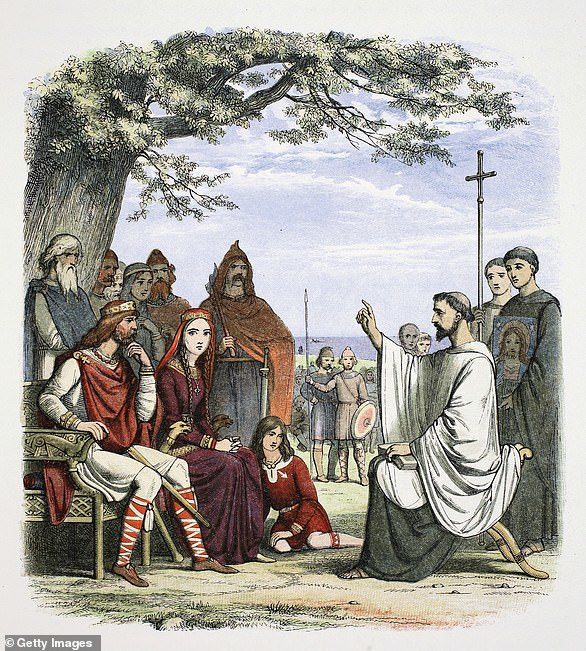
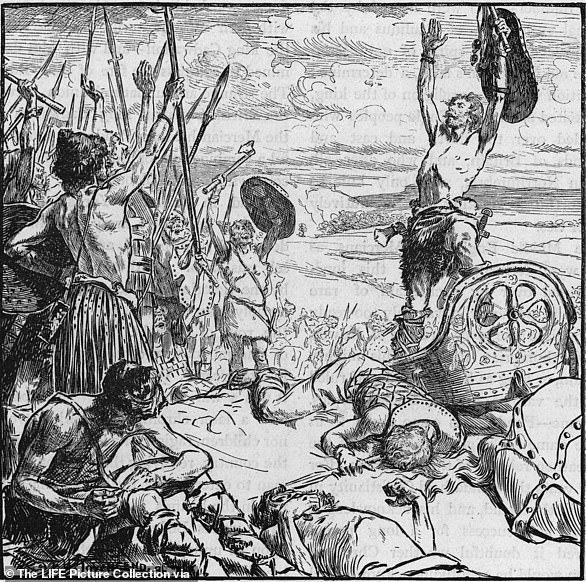



R.C.
*Sure ~98% of folks were the feudal equivalent of slaves.
RC